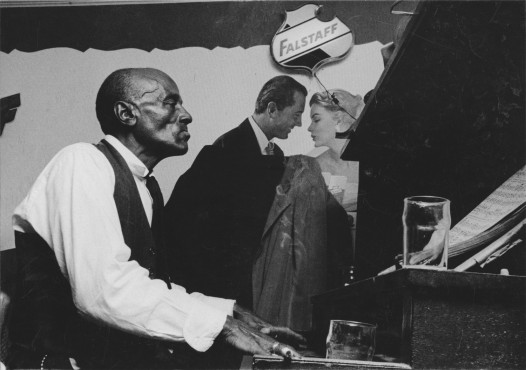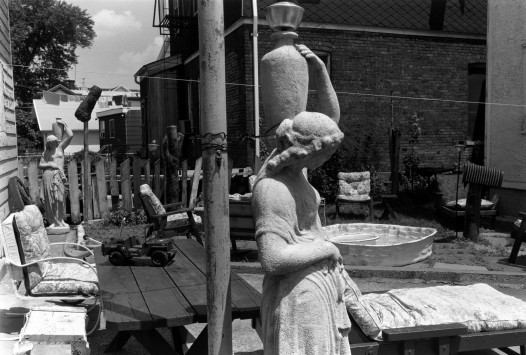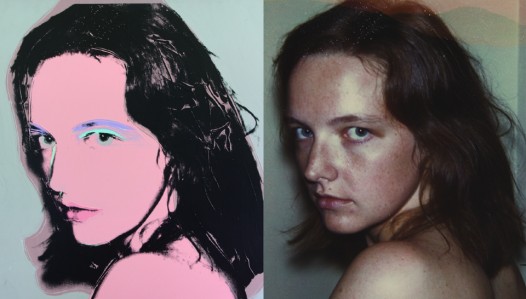
Lee Friedlander, ‘Joe James at Westwego Fireman’s Hall, Louisiana,’ 1958. Gelatin silver print. Courtesy of the William Ransom Hogan Archive of New Orleans Jazz, Tulane University. Gelatin silver print. Image courtesy of the artist.
Tropical storm Lee rocked the Gulf South region last weekend, bringing New Orleans a rainy Labor Day holiday. During the interim of downpours, I found time to escape uptown to Tulane’s campus to visit another Lee, Lee Friedlander that is, whose exhibition Jazz People: New Orleans Portraits by Lee Friedlander, along with Pictures for Books: Photographs by Thomas Roma and Pop Shots: Polaroid Portraits by Andy Warhol are currently open at the Newcomb Art Gallery. The official opening reception will be held at the Newcomb Art Gallery on September 14 from 5-7 p.m., but in the meantime, you can catch a sneak peak at the exhibitions.
The combination of the three diverse photography exhibitions presented together opens an interesting dialogue about photography as an artistic medium. In the past fifty years, art photography has fought its way into the hallowed domain of the museum space. The acknowledgement and acceptance of the photograph as art – which may seem uncontroversial when compared to contemporary discussions about the artistic merits of museum content such as fashion and street art – was made possible by myriad cultural factors. Such factors include John Szarkowski’s 1967 “New Documents” exhibition at the Museum of Modern Art in New York – a revolutionary exhibition that helped establish photography as an artistic medium and one in which Friedlander was featured as a principal artist – as well as changing boundaries of art in the 1960s due in part to the Warhol-lead Pop Art movement. Friedlander’s and Warhol’s contributions to the advancement and evolution of art are unquestionable, and viewing their photographs in the same set of exhibitions creates a provocative discourse about art, culture, and life in the mid-twentieth century.
Like most of Friedlander’s photographs, the thirty-eight black and white photographs in Jazz People give the viewer a glimpse, a definitive snapshot, into another time and place. In this instance, Friedlander’s photographs capture the essence of some of New Orleans’ greatest Jazz musicians of the 1950s and sixties, in the way only a truly great – and dare I even imply genius – artist would be able to do.

Thomas Roma, Untitled, 1984. From ‘Found in Brooklyn’ (1996) Gelatin silver print. Image courtesy of the artist.
The photographs in Pictures for Books encapsulate and give evidence to Thomas Roma’s “urge, or need, to understand through observation what is closest at hand.” His photographs present his observations of life – and often, religious life – in Brooklyn and Sicily. However, as the title implies, Roma’s pictures were developed for books, and in a rare case in art, are more compelling in the books than they are on the walls of the gallery. Yet the juxtaposition of viewing the photographs on the gallery walls versus in their original printed context – the books, which are also on display in the gallery – gives evidence to the multiple points of interaction a viewer can have with a photograph as well as to how different ways of addressing and approaching photography can convey varying meanings. Whichever approach to photography one prefers, the photographs provide insight into and images of the lifestyles of the people and places in them.

Andy Warhol, Tina Freeman detail, 1975. Acrylic and silkscreen on canvas. Private collection. Andy Warhol, Tina Freeman detail, 1975. Polaroid: Polacolor Type 108. © 2011 The Andy Warhol Foundation for the Visual Arts/ARS, NY”
While one may judge whether Roma’s exhibition is worth seeing in a gallery setting, can anyone really pass up the chance to see an Andy Warhol in person? Any opportunity to see one of the true King of Pop’s silk screens in person is worth it to witness the work one of the greatest modern artists. Warhol’s Polaroids as well as the two featured silk screen and acrylic canvases present a fascinating record of Warhol’s artistic process from point of contact with the sitter in the photographs to finished silk screen with Warhol’s signature outlandish colors that have the power to turn any image into a pop culture cult phenomena.
The contents of the Warhol exhibition are part of the Newcomb Art Gallery’s permanent collection and are a testament to the rich history and culture of the Newcomb Art legacy as well as to the driving cultural force of New Orleans.
Brianna Smyk has an M.A in Art History from San Diego State University. She lives and works in New Orleans and writes about arts and culture for NolaVie. Read more of Brianna’s articles at www.beingbreezie.tumblr.com.
 NOLAbeings Multimedia artist Claire Bangser created NOLAbeings as a portrait-based story project that marries...
NOLAbeings Multimedia artist Claire Bangser created NOLAbeings as a portrait-based story project that marries...  Voodoo in New Orleans: Reviving history: New Orleans fortune telling This article takes a deep dive into the history of Voodoo in New Orleans, its hybridization with Catholicism, and its present-day place in the city's culture. The author visits fortune-tellers in the French Quarter, using their guidance as a tool for introspection rather than a deterministic predictor of the future. Through her experiences in New Orleans, the author feels a mystical connection to both the past and the future.
Voodoo in New Orleans: Reviving history: New Orleans fortune telling This article takes a deep dive into the history of Voodoo in New Orleans, its hybridization with Catholicism, and its present-day place in the city's culture. The author visits fortune-tellers in the French Quarter, using their guidance as a tool for introspection rather than a deterministic predictor of the future. Through her experiences in New Orleans, the author feels a mystical connection to both the past and the future. 